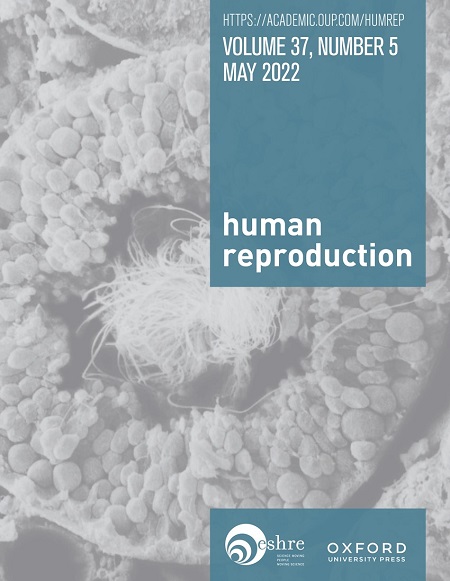More twins expected in low-income countries with later maternal ages at birth and population growth
IF 6
1区 医学
Q1 OBSTETRICS & GYNECOLOGY
引用次数: 0
Abstract
STUDY QUESTION How are the changing maternal age structure and population growth expected to shape future twinning rates in low-income countries? SUMMARY ANSWER With maternal age at birth projected to shift toward older ages, twinning rates are also estimated to increase in most low-income countries by 2050 and even more by 2100. WHAT IS KNOWN ALREADY Many of the sub-Saharan African and South Asian countries are undergoing, and projected to further experience, the shift of maternal age at birth to older ages. Advanced maternal age is a well-established predictor of multiple births at the individual level, but currently, it is unknown how the changes in maternal age distribution are associated with the changes in twinning rates at the population level in low-income countries. STUDY DESIGN, SIZE, DURATION We first estimated age-specific twinning probability based on Demographic Health Surveys and World Fertility Surveys data. We then scaled up the age-specific twinning probability at the population level to estimate changes in the number of twin births in 2050 and 2100 attributable to the estimated shifts in maternal age toward older ages as projected by the UN World Population Prospects (WPP). PARTICIPANTS/MATERIALS, SETTING, METHODS We analyzed ∼3.19 million births that occurred within 10 years before the interview. Majority of the births in our data took place between 1980 and 2015 across 39 countries, where the uptake of medically assisted reproduction (MAR) is known to have been low during the observation period. We estimated country fixed-effects models to obtain country-specific twinning rates and age-specific twinning probability. We applied these estimates to the future number of births projected by the UN WPP, to estimate the number of twin births in 2050 and 2100. MAIN RESULTS AND THE ROLE OF CHANCE With maternal age at birth projected to shift toward older ages, twinning rates are also estimated to increase in most countries by 2050 compared to 2010 (increases from 0.3% to 63% depending on countries), and even more in all studied countries by 2100 (increases from 3.5% to 79%). Due to its large population size, India will continue to have among the largest share of twin births despite its estimated decline of twin births by 10.5% by 2100. Nigeria, due to its not only large and growing population size but also high twinning rate, is expected to contribute the second largest number of twin births. LIMITATIONS, REASONS FOR CAUTION Although the accuracy in maternal recall of multiple births tends to be high, our use of data based on recalled births from the past nonetheless imply a potential bias in our estimation of twinning rates. WIDER IMPLICATIONS OF THE FINDINGS The present study suggests that, even if the spread of MAR remains slow in many low-income countries, twinning rates and number of twin births are expected to grow as an increase in maternal age at birth and population growth continue. Our findings call for more public health attention and societal support to be paid to twins and their families in low-income countries, given that twins are at higher risk of developmental challenges and health disadvantages. STUDY FUNDING/COMPETING INTEREST(S) D.S.L. was supported by the European Union (ERC, BIOSFER, 101071773). K.J.B. was supported by a Pro Futura Scientia XIV Fellowship awarded by the Swedish Collegium for Advanced Study and Riksbankens Jubileumsfond. There are no competing interests to declare. TRIAL REGISTRATION NUMBER N/A.在低收入国家,随着产妇出生年龄的推迟和人口的增长,预计会有更多的双胞胎
研究问题:不断变化的产妇年龄结构和人口增长预计将如何影响低收入国家未来的双胞胎率?随着产妇出生年龄预计将向高龄转移,预计到2050年,大多数低收入国家的双胞胎率也将增加,到2100年甚至更多。许多撒哈拉以南非洲和南亚国家正在经历并预计将进一步经历产妇出生年龄向高龄的转变。在个体水平上,高龄产妇是一个公认的多胞胎预测指标,但目前尚不清楚在低收入国家,产妇年龄分布的变化如何与人口水平上的双胞胎率变化相关联。研究设计、规模、持续时间我们首先根据人口健康调查和世界生育调查数据估计了特定年龄的双胞胎概率。然后,我们在人口水平上扩大了特定年龄的双胞胎概率,以估计2050年和2100年双胞胎出生数量的变化,这是由于联合国世界人口展望(WPP)预测的孕产妇年龄向老年的估计变化。研究对象/材料、环境、方法我们分析了访谈前10年内出生的约319万例新生儿。我们的数据中的大多数出生发生在1980年至2015年之间,分布在39个国家,在观察期间,这些国家的医学辅助生殖(MAR)使用率很低。我们估计了国家固定效应模型,以获得特定国家的双胞胎率和特定年龄的双胞胎概率。我们将这些估计应用到联合国世界粮食计划署预测的未来出生数量中,以估计2050年和2100年的双胞胎出生数量。随着产妇出生年龄预计将向高龄转移,预计到2050年,大多数国家的双胞胎率也将比2010年增加(根据国家的不同,从0.3%增加到63%),到2100年,所有研究国家的双胞胎率甚至会增加(从3.5%增加到79%)。由于其庞大的人口规模,印度将继续拥有最大的双胞胎出生份额,尽管预计到2100年,印度的双胞胎出生率将下降10.5%。尼日利亚不仅人口庞大且不断增长,而且双胞胎率也很高,预计将成为双胞胎出生数量第二多的国家。尽管母亲回忆多胞胎的准确性往往很高,但我们使用的数据是基于过去回忆的出生,这意味着我们对双胞胎率的估计存在潜在的偏差。目前的研究表明,即使MAR的传播在许多低收入国家仍然缓慢,随着产妇出生年龄的增加和人口的持续增长,双胞胎率和双胞胎出生数量预计将会增长。我们的研究结果呼吁对低收入国家的双胞胎及其家庭给予更多的公共卫生关注和社会支持,因为双胞胎面临着更高的发育挑战和健康劣势风险。研究经费/竞争利益(S) D.S.L.由欧盟(ERC, BIOSFER, 101071773)支持。K.J.B.获得了由瑞典高等研究院和Riksbankens Jubileumsfond颁发的Pro Futura Scientia XIV奖学金的支持。没有相互竞争的利益需要申报。试验注册号n / a。
本文章由计算机程序翻译,如有差异,请以英文原文为准。
求助全文
约1分钟内获得全文
求助全文
来源期刊

Human reproduction
医学-妇产科学
CiteScore
10.90
自引率
6.60%
发文量
1369
审稿时长
1 months
期刊介绍:
Human Reproduction features full-length, peer-reviewed papers reporting original research, concise clinical case reports, as well as opinions and debates on topical issues.
Papers published cover the clinical science and medical aspects of reproductive physiology, pathology and endocrinology; including andrology, gonad function, gametogenesis, fertilization, embryo development, implantation, early pregnancy, genetics, genetic diagnosis, oncology, infectious disease, surgery, contraception, infertility treatment, psychology, ethics and social issues.
 求助内容:
求助内容: 应助结果提醒方式:
应助结果提醒方式:


